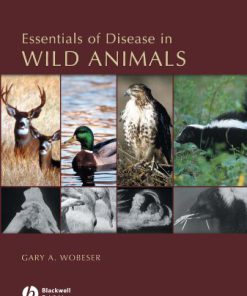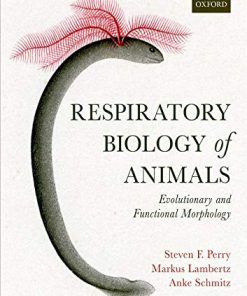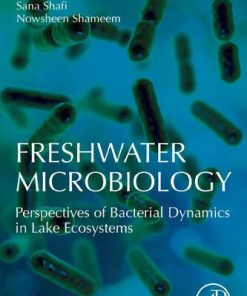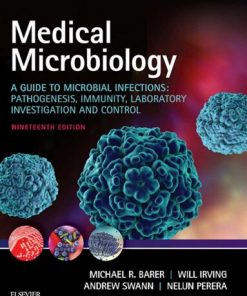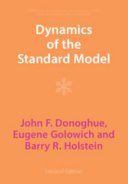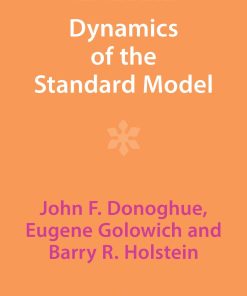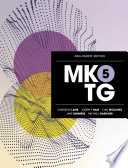Pathogenesis of Bacterial Infections in Animals 5th Edition by John Prescott, Janet MacInnes, Filip Van Immerseel, John Boyce, Andrew Rycroft, José A 1119754852 9781119754855
$50.00 Original price was: $50.00.$25.00Current price is: $25.00.
Pathogenesis of Bacterial Infections in Animals 5th Edition by John F. Prescott, Janet I. MacInnes, Filip Van Immerseel, John D. Boyce, Andrew N. Rycroft, José A – Ebook PDF Instant Download/DeliveryISBN: 1119754852, 9781119754855
Full download Pathogenesis of Bacterial Infections in Animals 5th Edition after payment.
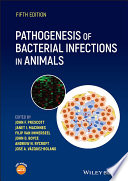
Product details:
ISBN-10 : 1119754852
ISBN-13 : 9781119754855
Author : John F. Prescott, Janet I. MacInnes, Filip Van Immerseel, John D. Boyce, Andrew N. Rycroft, José A
Pathogenesis of Bacterial Infections in Animals, Fifth Edition is a specialist reference that provides a comprehensive review of bacterial pathogens in animals and their interplay with complex disease processes, offering a complete understanding of how bacteria cause disease and covering recent advances in the field and new taxonomies. In the newly revised fifth edition, additional introductory chapters have been added to help to set the material in context, and more figures have also been added to improve understanding and comprehension throughout the text. A companion website presents the figures from the book in PowerPoint and references. This detailed reference includes novel approaches to controlling bacterial pathogens in light of growing concerns about antimicrobial resistance, with more than 70 expert authors sharing their wisdom on the topic. While molecular pathogenesis is a major aspect in almost every chapter, the authors have been careful to place pathogens in their broader context. Pathogenesis of Bacterial Infections in Animals, Fifth Edition is an essential resource for graduate students in veterinary medicine and animal science, microbiologists, virologists, and pathologists. It is the only book to cover this topic to this depth through the insight of dozens of qualified and practicing professionals.
Pathogenesis of Bacterial Infections in Animals 5th Table of contents:
1 Themes in Bacterial Pathogenesis
Introduction
The Basic Elements of Bacterial Pathogenesis
Concepts of Bacterial Virulence are Being Refined
Host–Pathogen Communications are Critical
Pathogenesis in the Post‐Genomic Era
Gaps in Knowledge and Anticipated Directions
References
2 Evolution of Bacterial Pathogens
What are Pathogens and How Do They Emerge?
Bacterial Fitness and Virulence
Sources of Genetic Diversity, Population Structure, and Genome Plasticity
Pathogenicity Islands
Bacteriophages and Their Role in Pathogen Evolution and Virulence
Examples of Virulence Evolution
Gaps in Knowledge and Anticipated Directions
References
3 Understanding Pathogenesis Through Pathogenomics and Bioinformatics
Introduction
How Mutations Generate Bacterial Diversity
Genome Sequencing Technologies
Genome Assembly
Gene Prediction and Annotation
Defining Prokaryotic Species from Genomes
The Pangenome Concept, Reconstruction, and Comparative Analyses
Phylogenomics and Genome‐Wide Association Studies
Functional Genomics for Understanding Host–Pathogen Interactions
Reverse Vaccinology
Gaps in Knowledge and Anticipated Directions
References
4 Experimental Approaches to Understanding Pathogenesis
Introduction
Testing Koch’s Postulates
Virulence Factors and Main Steps in Pathogenesis
Molecular Koch’s Postulates
Refining Animal Usage
Experimental Approaches for Virulence Factor Discovery and Validation
Approaches for Virulence Factor Discovery
Bringing It All Together: Validation and Further Characterization of Virulence Factors
Two Stories of Virulence Factor Discovery and Characterization: Pasteurella multocida Capsule, and Mycoplasma bovis Adhesins
Gaps in Knowledge and Anticipated Directions
References
5 Subversion of the Immune Response by Bacterial Pathogens
Introduction
Subversion of Innate Responses
Subversion of Adaptive Immunity
Manipulation of Cell Fate
Non‐Coding RNA and Host‐Pathogen Interactions
Epigenetic and Genetic Modulation
Gaps in Knowledge and Anticipated Directions
References
6 Chinks in the Armor
Introduction
Virulence Factors: Pathogenesis‐Based Targets to Combat Bacterial Pathogens
Gaps in Knowledge and Anticipated Directions
References
7 Escherichia coli
Introduction
Pathotypes of E. coli and Associated Disease and Pathological Changes in Animals
Virulence Factors of Pathogenic E. coli
Pathogenesis of Enterotoxigenic E. coli
Pathogenesis of Enteropathogenic E. coli Disease
Pathogenesis of Shiga Toxin‐Producing E. coli Disease
Pathogenesis of Extraintestinal Pathogenic E. coli Infections
Gaps in Knowledge and Anticipated Directions
References
8 Salmonella
Introduction
Characteristics of the Organism
Types of Disease and Pathologic Changes
Salmonella Infections in Different Major Farmed Animal Species
Virulence Factors
Pathogenesis
Immunity to Infection and its Manipulation by Salmonella
Antimicrobial Resistance
Gaps in Knowledge and Anticipated Directions
References
9 Yersinia
Introduction
Characteristics of the Organism
Pathogenic Species
Taxonomy
Major Virulence Factors of the Highly Pathogenic Yersinia
Yersinia pestis
Yersinia pseudotuberculosis and Yersinia enterocolitica
Yersinia ruckeri
Yersinia entomophaga
Control of Yersinia Infections
Gaps in Knowledge and Anticipated Directions
References
10 Pasteurella
Introduction
Characteristics of the Organism
Source of Infection: Ecology, Evolution, and Epidemiology
Types of Disease and Pathologic Changes
Virulence Factors and Pathogenomics
Regulation of Virulence
Pathogenesis
Immunity
Control
Gaps in Knowledge and Anticipated Directions
References
11 Mannheimia and Bibersteinia
Introduction
Characteristics of the Organism
Pathogenic Species
Source of Infection: Ecology, Evolution, and Epidemiology
Types of Disease and Pathologic Changes
Virulence Factors and Pathogenomics
Regulation of Virulence
Pathogenesis
Immunity
Control
Gaps in Knowledge and Anticipated Directions
References
12 Actinobacillus
Introduction
Actinobacillus pleuropneumoniae
Actinobacillus lignieresii
Actinobacillus equuli
Actinobacillus suis
Gaps in Knowledge and Future Directions
References
13 Other Pasteurellaceae: Avibacterium, Bibersteinia, Gallibacterium, Glaesserella, and Histophilus
Introduction
Avibacterium
Bibersteinia
Gallibacterium
Glaesserella parasuis
Histophilus
References
14 Pseudomonas
Introduction
Characteristics of the Organism
Pathogenic Species
Sources of Infection: Ecology, Evolution, and Epidemiology
Types of Disease and Pathologic Changes
Virulence Factors and Pathogenomics
Pathogenesis
Immunity
Control, Prevention, and Treatment
Gaps in Knowledge and Anticipated Directions
References
15 Moraxella
Introduction
Infectious Bovine Keratoconjunctivitis
Pathogenesis of Moraxella bovis Infection
Immunity
Control
Gaps in Knowledge and Future Directions
References
16 Brucella
Introduction
Characteristics of the Organism
Pathogenic Species
Source of Infection: Ecology, Evolution, and Epidemiology
Types of Disease and Pathologic Changes
Virulence Factors
Regulation of Virulence
Pathogenomics
Pathogenesis
Immunity
Control
Gaps in Knowledge and Anticipated Directions
References
17 Bordetella
Introduction
Characteristics of the Organisms
Pathogenic Species
Source of Infection: Ecology and Epidemiology
Types of Disease and Pathologic Changes
Virulence Factors
Regulation of Virulence
Pathogenesis
Immunity
Control
Gaps in Knowledge and Anticipated Directions
References
18 Campylobacter
Introduction
Diseases, Etiology, and Ecology
Clinical Observations and Pathologic Changes
Pathogenesis and Virulence Factors
Pathogenomics and Evolution
Immunity
Control
Gaps in Knowledge and Future Directions
References
19 Helicobacter
Introduction
Gastric Helicobacters
Enterohepatic Helicobacters
Gaps in Knowledge and Future Directions
References
20 Chlamydia and Coxiella
Introduction
Chlamydiae
Coxiella burnetii
References
21 Rickettsiales
Introduction
Family Anaplasmataceae
Family Rickettsiaceae
References
22 Lawsonia intracellularis
Introduction
Characteristics of the Organism
Sources of Infection: Ecology and Epidemiology
Types of Disease and Pathologic Changes
Virulence Factors and Pathogenomics
Pathogenesis
Immunity
Control
Gaps in Knowledge and Anticipated Directions
References
23 Leptospira
Introduction
Characteristics of the Organism
Leptospira Species
Source of Infection: Ecology, Evolution, and Epidemiology
Clinical Presentation and Signs
Virulence Factors and Pathogenomics
Regulation of Virulence
Pathogenesis
Immunity
Control
Gaps in Knowledge and Anticipated Directions
Acknowledgments
References
24 Brachyspira
Introduction
Characteristics of the Organism
Pathogenic Species and Disease Associations
Source of Infection: Ecology, Evolution, and Epidemiology
Virulence Factors and Pathogenomics
Pathogenesis
Immunity
Control
Gaps in Knowledge and Anticipated Directions
References
25 Staphylococcus
Introduction
Characteristics of the Organism
Pathogenic Species
Staphylococcus aureus Infections in Cattle
Staphylococcus aureus Infections in Poultry
Staphylococcus aureus Infections in Rabbits
Staphylococcus hyicus Infections in Pigs
Staphylococcus pseudintermedius Infections in Dogs
Gaps in Knowledge and Future Directions
References
26 Streptococcus
Introduction
Characteristics of the Organism
Pathogenic Species
Streptococcus agalactiae
Streptococcus dysgalactiae
Streptococcus uberis
Streptococcus equi
Streptococcus zooepidemicus
Streptococcus canis
Streptococcus suis
Gaps in Knowledge and Anticipated Directions
References
27 Bacillus anthracis
Introduction
Characteristics of the Organism: Taxonomy and Phylogeny
Source and Spread of the Infection: Ecology, Evolution, and Epidemiology
Types of Disease and Pathologic Changes
Virulence Factors and Pathogenomics
Regulation of Virulence
Pathogenesis
Immunity and Vaccines
Control and Prevention of Anthrax
Gaps in Knowledge and Anticipated Directions
References
28 Enteric Clostridia
Introduction
Clostridium perfringens
Clostridioides difficile
Other Enteric Clostridia
References
29 Histotoxic Clostridia
Introduction
Characteristics of the Organisms
Source of Infection and Basic Pathogenesis
Pathogenic Species
Control
Gaps in Knowledge and Future Directions
Acknowledgment
References
30 Neurotoxic Clostridia
Introduction
Characteristic of the Organisms
Sources of Infection: Ecology and Epidemiology
Diseases
Virulence Factors
Pathogenesis
Control
References
31 Mycoplasmas
Introduction
Characteristics of the Organisms
Pathogenic Species
Source of Infection: Ecology, Evolution, and Epidemiology
Virulence Factors and Pathogenomics
Regulation of Virulence
Types of Disease and Pathologic Changes
Pathogenesis
Immunity
Control
Gaps in Knowledge and Anticipated Directions
References
32 Corynebacterium, Arcanobacterium, and Trueperella
Corynebacterium
Corynebacterium pseudotuberculosis
Bovine Pyelonephritis Caused by Corynebacterium Species
Other Animal Pathogenic Corynebacterium Species
Arcanobacterium
Trueperella
Gaps in Knowledge and Future Directions
References
33 Rhodococcus equi
Introduction
Characteristics of the Organism
Source of Infection and Epidemiology
Types of Disease and Pathologic Changes
Virulence Factors
Evolution of Rhodococcus equi Virulence
Pathogenesis
Immunity
Treatment and Control
Gaps in Knowledge and Anticipated Directions
Acknowledgments
References
34 Mycobacterium
Introduction
Characteristics of the Organism
Sources of Infection
Source of Infection: Evolution and Epidemiology
Virulence Factors and Pathogenomics
Regulation of Virulence
Types of Disease
Pathogenesis
Adaptive Immunity and Mycobacterial Pathogenesis
Control
Gaps in Knowledge and Anticipated Directions
References
35 Gram‐Negative Anaerobes
Introduction
General Bacterial Pathogenesis Aspects
Fusobacterium
Bacteroides
Prevotella and Porphyromonas
Dichelobacter nodosus
Treponema
People also search for Pathogenesis of Bacterial Infections in Animals 5th:
bacterial infections in animals
pathogenesis of bacterial infection
pathogenesis in animals
pathogen in animals
animal pathogenic bacteria
Tags: Pathogenesis, Bacterial Infections, Animals, John Prescott, Janet MacInnes, Filip Van Immerseel, John Boyce, Andrew Rycroft, José A
You may also like…
Medicine Technique - Electronics: Robotics
Living Machines: A Handbook of Research in Biomimetics and Biohybrid Systems 1st Edition
Science
Respiratory Biology of Animals: Evolutionary and Functional Morphology 1st Edition Steven F. Perry
Mathematics
Business & Economics - Sales & Marketing
Essentials of Marketing Research 5th Edition Joseph F. Hair Jr.
Biology and other natural sciences - Microbiology
Physics - Others
Uncategorized
Business & Economics - Sales & Marketing




